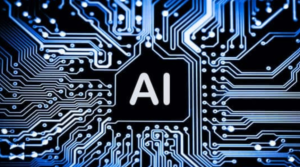Your AI tools don’t know what you’ve already built, fixed, or decided – Pieces MCP changes that. It connects your personal work context directly to the AI, so you can move faster without repeating yourself.
Built on an open standard and engineered for developers, Pieces MCP makes it possible for language models to access the real context behind your work – without compromising speed, security, or simplicity.
Whether you’re part of a startup team or scaling an internal tooling stack, adopting Pieces MCP can fundamentally change how you engage with AI.
What is Pieces MCP?
At its core, a model context protocol is a standardized way for large language models, like Claude or ChatGPT, to retrieve information from external tools and data sources. Developed originally by Anthropic, MCPs act as a bridge between AI systems and the structured context that lives in your local environment.
Pieces MCP is a practical implementation of this concept. It connects your favorite development tools to a locally managed memory engine – called PiecesOS – that tracks and stores important elements of your workflow.
With minimal setup, you can give your AI tools a persistent, private window into your project history.
Why Teams are Making the Shift
In the past, this kind of context-aware AI tooling was limited to large organizations with dedicated ML infrastructure. But the technology has evolved—and the barriers are gone.
Today, agile teams are integrating Pieces MCP to:
- Get faster, more relevant responses from AI
- Surface insights from previous work without manual searching
- Avoid repeating context every time they switch tools or revisit a task
With no cloud dependency and a modular architecture, Pieces MCP fits easily into the stack of a small startup or an enterprise team alike.
How it Works in Your Environment
Pieces MCP works behind the scenes, enabling your AI applications to deliver smarter answers. Here’s what the interaction looks like:
- A developer issues a prompt in a tool like Cursor or GitHub Copilot
- The tool uses the MCP client to identify relevant context sources
- PiecesOS receives the request and returns matching notes, snippets, or logs
- The AI responds using that additional data to refine its answer

The end result is a conversation that feels personalized, continuous, and specific to your work – even if it spans days, tools, or projects.
Capturing the Data that Matters
The engine behind it all is Pieces LTM-2, a long-term memory engine built into PiecesOS. It works quietly as you code, storing:
- Implementation examples
- Error logs and debug sessions
- Configuration snapshots
- Documentation snippets
- Browser-based research
- Team notes and annotations
Everything is saved locally and enriched over time, so your AI tools can pull in what’s most relevant when you need it.
Real-world Applications
Imagine resolving a production bug and later running into a similar issue. Instead of hunting for the old fix, your AI assistant retrieves it instantly.
Or consider onboarding a new engineer—rather than pointing them to buried Notion docs or Slack threads, your MCP-enabled tools provide real-time context from previous decisions.
Other use cases include:
- Debugging recurring errors based on historical logs
- Matching new code to previously used components
- Surfacing decision trails for architecture changes
- Diagnosing performance issues with access to recent config changes
These are the kinds of efficiencies that shift team velocity.
Built for Privacy and Performance
A major differentiator for Pieces MCP is that it operates entirely on your machine. No data is sent to external servers. Sensitive client information, proprietary code, and internal conversations stay private.
Because the protocol and architecture are open, you can expand or customize your setup as needed.

Add new integrations. Build your own connectors. All without relying on a vendor-controlled API.
The Architecture at a Glance
Pieces MCP uses a clean three-part structure:
- Host – The tool you’re using (e.g., Cursor, VS Code)
- Client – The protocol-aware plugin inside that host
- Server – The bridge to local tools and data, powered by PiecesOS
This lightweight setup enables rapid, low-latency data retrieval without sacrificing modularity or control.
Getting Started
To begin using Pieces MCP:
- Install PiecesOS, the local engine that manages and stores your context
- Choose the integration that fits your stack (Cursor, Copilot, or Goose)
- Follow the guide to connect your tools and start working with enriched AI
No additional infrastructure is needed. Within minutes, your development environment becomes memory-aware.
The Future of AI is Personal
As MCP adoption spreads across the industry, teams are quickly discovering the advantages of making AI context-rich and workflow-aware.
What once required cloud infrastructure and complex APIs is now accessible to anyone with a laptop and a clear need to move faster.
Pieces MCP is helping small teams think big, without acting like big tech.
This isn’t just another AI tool. It’s a shift in how your team captures, stores, and reuses its own expertise.











































































































